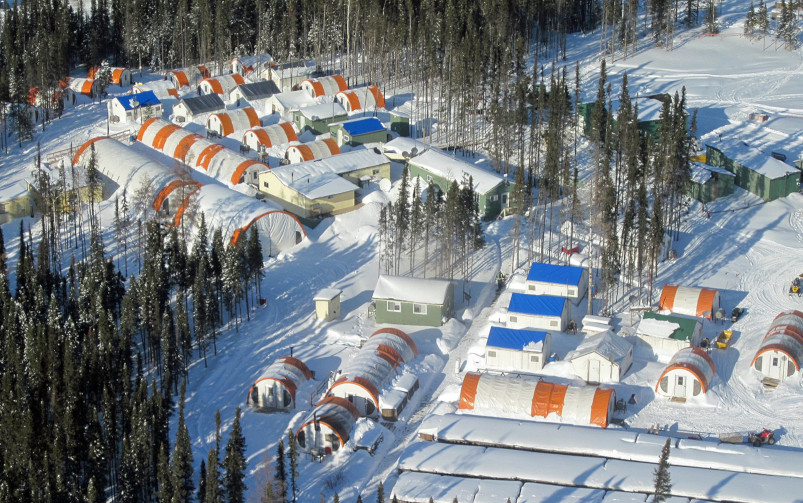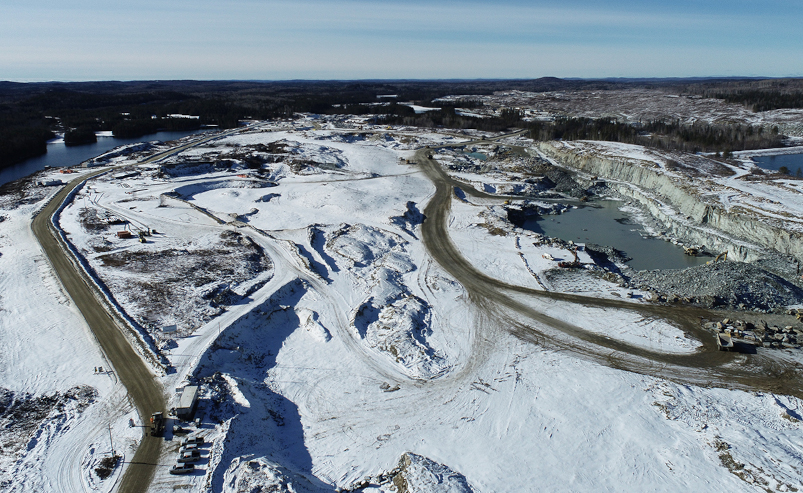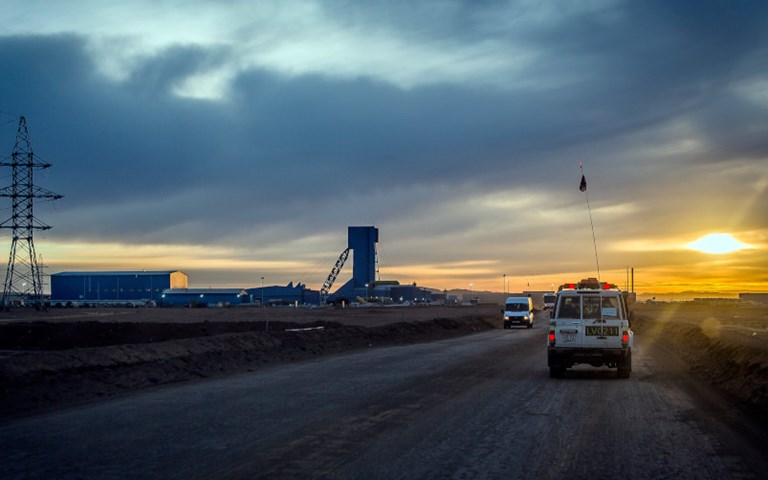Rio Tinto says that once construction is completed, Oyu Tolgoi will be the fourth-largest copper mine in the world. Courtesy of Rio Tinto.
Welcome back to your weekly mining news recap, where we catch you up on some of the news you may have missed. This week we have stories about an FCA probe of Rio Tinto’s Oyu Tolgoi mine, an acquisition and an offer by BHP, and a major mining technology acquisition.
Rio Tinto is being investigated by Britain’s financial watchdog, the Financial Conduct Authority (FCA), concerning its US$6.75 billion underground copper project in Mongolia’s Gobi Desert, Reuters reports. The FCA will be examining whether Rio Tinto breached listing rules when making disclosures about the value of its Oyu Tolgoi mine in 2018 and 2019. Rio Tinto reached a binding agreement with Turquoise Hill, Ltd. earlier this year for funding an expansion of the mine, but costs have gone US$1.4 billion over Rio Tinto’s initial 2016 estimate of US$6.75 billion, causing friction between the two companies.
BHP has made a $325 million offer to buy Canadian nickel and copper mining company Noront Resources, Yahoo!Finance reports. The offer rivals another from Wyloo Metals, and is part of the recent rush to secure supplies of battery metals due to the rise in electric vehicle sales. BHP said its offer valued Noront at $0.55 per share, representing a premium of 129% to the firm's closing price on May 21, a day before Wyloo unveiled its proposal.
BHP is moving closer to a potential Jansen potash mine restart after reaching a conditional agreement with Westshore Terminals Investment Corp for port services, MiningFeeds reports. Under the agreement, which is conditional on BHP moving ahead with Jansen’s first phase, Vancouver-based Westshore would construct infrastructure to handle potash at Westshore’s Roberts Bank Terminal by 2026, with BHP funding the construction.
Thinking about how to close down mines in a manner that is as environmentally and socially responsible as possible is something that should start before the mine is even open. This long-term approach, known as integrated mine closure planning, recognizes that reclamation is a far more complex process than has often been believed, and attempts to circumvent some of the roadblocks that have led to short-term and liability-prone mining closures.
Canada’s Towards Sustainable Mining (TSM) standard has been one of the country’s chief contributions to the global mining industry’s focus on environmental, social and governance (ESG) standards, said Pierre Gratton, president and CEO of the Mining Association of Canada. The TSM standard has seen adoption by mining associations around the world, becoming a gold standard for orienting companies’ ESG goals, and providing an avenue to publicly display their commitments.
FLSmidth announced that it has reached an agreement with Thyssenkrupp to acquire the company’s mining business (TK Mining) for €325 million, with closing of the transaction expected in the second half of 2022. FLSmidth cited TK Mining’s value as “a leading full-line supplier of solutions for mining systems, material handling, mineral processing and services” as being highly complementary to its own business. FLSmidth noted that the combination of the two companies will “create a leading global mining technology provider with operations from pit to plant.”
Never miss another recap
Sign up for the latest news from CIM Magazine and the Canadian Institute of Mining, Metallurgy and Petroleum.
First Cobalt announced it would be partnering with Timiskaming First Nation to study regional medicinal plants and mushrooms, to assess the historic effects of mining activities in the Cobalt Camp mining district. The study will support the Wild Basket program, a community project that harvests and sells wild products from the region on the Timiskaming First Nation’s traditional territory, and is intended to promote sustainable living and the community’s environmental preservation efforts. The study will be completed over a two-year period and aims to identify the risks from contaminants from human industrial activity to the harvested products.
A coal mining byproduct, called nano humus, has been shown in a University of Alberta research project to be highly effective at reclaiming the land and water used in mining, Mining.com reports. Yihan Zhao, the lead researcher on the project, said that nano humus has “outstanding physical and chemical properties” that allows it to remove heavy metals from contaminated water and soil. Zhao also said she would like to partner with Canadian industries in mining reclamation to test out her findings in the field.
Monarch Mining has released a new measured and indicated resource estimate for its Beaufor mine in Val D’or, Quebec, that more than doubles its previous estimate, Mining.com reports. The resource estimate, prepared by BBA Inc., includes measured and indicated resources of 1.3 million tonnes grading 5.3 g/t gold, containing 219,200 ounces. The inferred resource is 818,000 tonnes at 4.7 g/t gold, for 122,500 ounces. Monarch has announced it plans to restart the mine, which it acquired in 2017, next year.
Second quarter results are beginning to roll in from around the mining industry. Here are some of the highlights:
Agnico Eagle reported gold production of 500,698 ounces at an all-in sustaining cost of US$1,021 per ounce. Its quarterly net income was reported at US$189.6 million.
Kinross produced 538,091 gold equivalent ounces at its operations in the second quarter with an all-in sustaining cost of US$1,069 per equivalent ounce and net earnings of US$119.3 million.
Rio Tinto released its half-year 2021 results this week, reporting net earnings of US$12.3 billion over the past two quarters. The company also reported 152.3 million tonnes of iron ore produced at its Pilbara mine and 236.1 million tonnes of copper produced at its operations in the first six months of the year.
Cameco recorded a net loss of $37 million in the second quarter, partially due to the four-month suspension of its Cigar Lake mine earlier this year. The company produced 1.3 million pounds of uranium in the second quarter.
Vale reported iron ore production of 75.69 million tonnes, nickel production of 41.5 million tonnes and copper production of 73.5 million tonnes in the second quarter, as well as a net income of US$7.59 billion.
Teck grossed revenues of $2.56 billion in the second quarter thanks to increases in the prices for its principal products. The company produced 72,000 tonnes of copper, 168,000 tonnes of zinc concentrate and 6.4 million tonnes of steelmaking coal.
Kirkland Lake Gold recorded net earnings of US$224.2 million in the second quarter, producing 379,195 ounces of gold at an all-in sustaining price of US$780 per ounce.
Lundin Mining produced 63,457 tonnes of copper and 34,833 tonnes of zinc in the second quarter and reported net earnings of US$226.3 million.
Champion Iron recorded iron ore production of 1.936 million wet metric tonnes this quarter as well as a net income of $224.3 million.
That’s all for this week! If you’ve got feedback, you can always reach us at editor@cim.org. If you’ve got something to add, why not join the conversation at our Facebook, Twitter or LinkedIn pages? Like your recap with a few more gifs? Check out our mining news recap stories on our Instagram.




